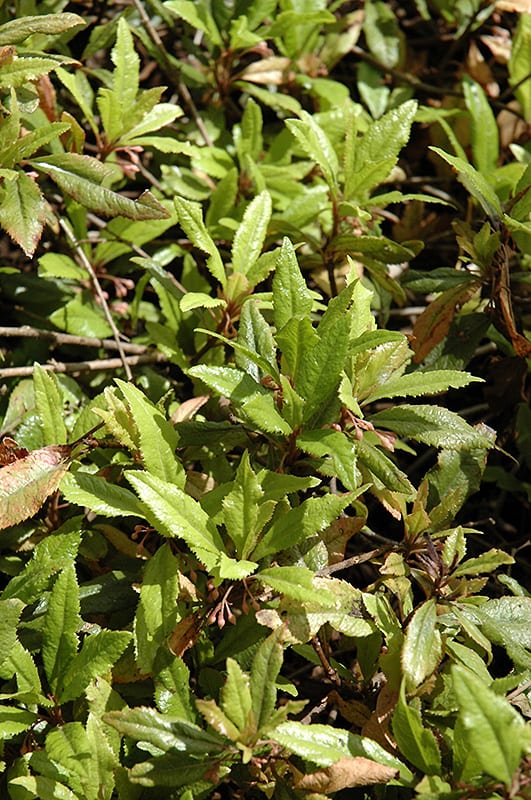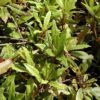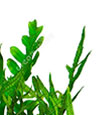Chirimen Japanese Ardisia
A rich groundcover perfect for shaded areas that are moist and cool; deep green leaves are finely serrated; smaller leaves and lower growth habit than the species, and slightly hardier; does not tolerate foot traffic and is not drought tolerant.
Plant Images provided by NetPS Plant Finder Tool.
Please contact your local store for product availability.
Find a garden center near you.
Species: japonica
Other Species Names: Marlberry; Maleberry
Plant Height: 6 in.
Spread: 48 in.
Evergreen: Yes
Plant Form: spreading
Emergent Foliage Color: copper
Summer Foliage Color: dark green
Minimum Sunlight: shade
Maximum Sunlight: partial shade
Chirimen Japanese Ardisia features dainty clusters of pink star-shaped flowers with white overtones at the ends of the branches in mid spring. It has dark green foliage which emerges coppery-bronze in spring. The small glossy pointy leaves remain dark green throughout the winter. It produces red berries in mid fall.
Chirimen Japanese Ardisia is a dense multi-stemmed evergreen shrub with a ground-hugging habit of growth. It lends an extremely fine and delicate texture to the landscape composition which should be used to full effect.This shrub will require occasional maintenance and upkeep. When pruning is necessary, it is recommended to only trim back the new growth of the current season, other than to remove any dieback. Gardeners should be aware of the following characteristic(s) that may warrant special consideration;SuckeringChirimen Japanese Ardisia is recommended for the following landscape applications;Rock/Alpine GardensGroundcover
Chirimen Japanese Ardisia will grow to be only 6 inches tall at maturity, with a spread of 4 feet. It tends to fill out right to the ground and therefore doesn't necessarily require facer plants in front. It grows at a medium rate, and under ideal conditions can be expected to live for approximately 20 years.This shrub does best in partial shade to shade. It does best in average to evenly moist conditions, but will not tolerate standing water. It is particular about its soil conditions, with a strong preference for rich, acidic soils. It is somewhat tolerant of urban pollution. This is a selected variety of a species not originally from North America.






